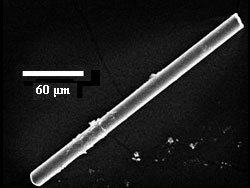
What is the "Myth" about sensor dust?
Most people assume that most digital cameras come with dust already on the sensor. That is a fact based on their real life experience. However, most of the dust is dislodged from within the camera during transportation and changes in air pressure.
Even if you never remove your lens, you are still likely to experience this dust effect. This is due to the fact that dust has internal sources as well as external. So ignoring the internal sources of the dust will not help to solve the problem. In most new cameras the internal sources may be more important than external.
What are those spots we see on the sensor?
To understand how to properly remove dust or spots from your sensor, we first need to know what they are and where they come from. The spots that are usually seen on the sensor are either wet or dry and where they come from is either an internal or external source.
Wet spots are either water based or oil based. An example of a water-based spot would be rain drops whereas an oil-based spot would be camera lubricant. There are other examples such as cough particles and saliva which are protein and fatty-based solutions that fall on the sensor. This happens during conversation or heavy breathing when the sensor is exposed.
Dry "spots" are simply dust particles which are made up of various materials.
"Dust" can be classified under one of 4 categories:
Silicon or Quartz based high degree of hardness — most scratches are the result of these particles (ex: glass & sand)
Metallic softer in nature — not as hard as silicon
Fiber usually made from synthetic materials that make up the fabric of our clothing — quite harmless but annoying (ex: pants, shirt, etc.)
Organic & Man-Made organic can be internal such as oil lubricant or external such as pollen, dead skin cells — man-made internal examples include foam or fabric used within camera chamber — also quite harmless but annoying.





